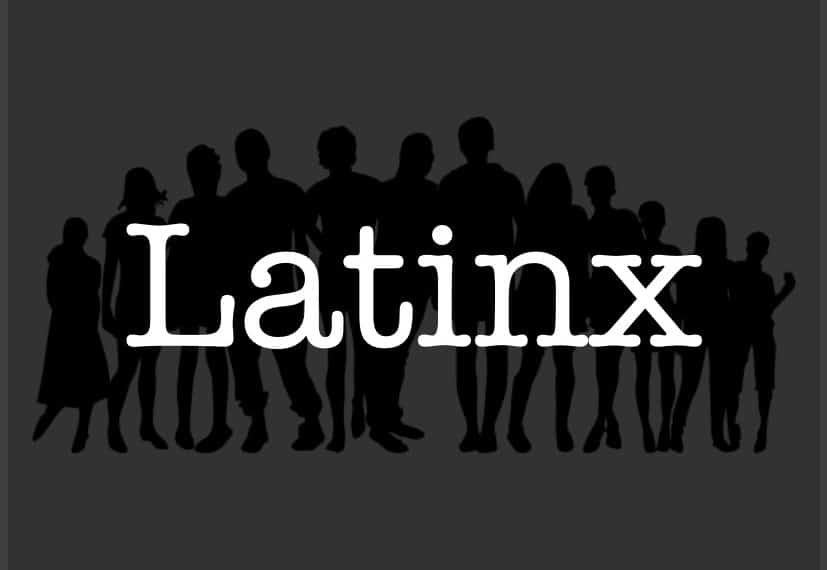Hispanic.
Latino.
Latinx.
These are just a few of the terms used to describe a group of more dynamic people than the one-dimensional labels forced upon them, often by the U.S. government and academics.
Census racial and ethnic epithets, for example, widen the gap by erasing people behind labels, leading to stereotypes that promote bias.
Latinx is a gender-neutral word meant to be more inclusive by replacing masculine Latino or female Latina. However well-intentioned, the term is not universally accepted. But it should be.
Latinx – A Brief History
Before tackling the use of Latinx, it is best to unpack the words Hispanic and Latino.
Hispanic is about language. It is generally accepted as a simplification of Spanish-speaking people from or lineage to Latin America and Spain.
Latino is about geography. It refers to people born in or with roots in Latin America.
So, Spaniards are Hispanic, but not Latino, and Brazilians are Latino, but not Hispanic. And people like myself can be both. I am the son of Peruvian immigrants.
Hispanic was first formally used by the U.S. government in the late 1970s. Still, it didn’t come into prominence until the U.S. Census Bureau adopted the term in the 1980s as a means of encouraging cultural assimilation into American society. The Spanish-speaking connector for communities south of the U.S. border became problematic for the Portuguese-speaking Brazilians.
In reaction to criticism, the U.S. Census started using Latino in the 2000 count after the term gained popularity on the West Coast and in the media. While both words are often used interchangeably, many now make an effort to use Hispanic-Latino in an all-encompassing way.
As people debated the use of Hispanic and Latino, recent generations brought a new arrival to the fray, Latinx.
Spanish is a gendered language labeling nouns as either masculine or feminine. A troubling situation for non-binary people. In the 2000s, Latinx emerges as the more inclusive gender-neutral descriptor referring to Latin American people or those with ties to Latin America.
The use of Latinx gained popularity in 2016 after the mass shooting at Pulse, an LGBTQ nightclub in Orlando, Florida. In 2018, the Merriam-Webster Dictionary adopted the term.
The resistance to the one-size-fits-all attempt to unify people regardless of gender only highlights the division within the multifaceted community.
X marks the problem
First, there’s the linguistic debate. The letter “x” in Spanish is often pronounced similarly to the “x” in English, although it can also have an “h” sound used in Native Mexican languages. That’s a problem, say critics arguing it alienates Spanish speakers who lack fluency in English, not to mention Portuguese speakers who pronounce “x” in multiple ways.
Then there’s the political argument. Opponents contend Latinx is an elitist term proliferated by progressive scholars driving a liberal agenda by imposing a needless gender-fluid identifier.
Another argument against “Latinx” is that it erases feminist movements in the 1970s that fought to represent women with the word “Latina,” said George Cadava, Director of the Latina and Latino Studies program at Northwestern University in an interview with USA Today.
The increasing popularity of Latinx is true to the continuing struggle of people who historically have fought against conforming labels by the establishment seeking to corral them.
Let’s not fall into the trap of being prescriptive about using Latinx, or Hispanic and Latino for that matter; instead, let’s take the opportunity as a starting point to better understanding why more options in self-describing are best.
I am Peruvian-American
Hispanics, Latinos, Latinx make up more than 60-million people in the United States. The majority of them are born in this country with ancestors from Latin America. According to The Pew Research Center, Mexicans, Salvadorans, and Guatemalans are concentrated mainly in western states, while Cubans, Colombians, Hondurans, and Peruvians are largely concentrated in the South. The most significant numbers of Puerto Ricans, Dominicans, and Ecuadorians are in the Northeast.
My parents Hugo and Graciela, immigrants from Peru, settled in Paterson, New Jersey, in the 1960s, where I was born. Their story is not unlike that of thousands of people who come to America today; they came for a better life.
I witnessed my parents’ many sacrifices to put a roof over our heads and food on our table. I seldom saw my father, who was already at his first job, when I woke up to go to school. I was asleep by the time he came home after his second job. My mother also had multiple jobs, often taking me along when she cleaned houses and offices.
When I am asked, “where are you from?”, and understanding the person isn’t asking me the name of my birthplace, but where I trace my roots – I answer, “I am Peruvian-American.”
No Hispanic, Latino, Latinx first self-identifies with labels erasing the country in which they were born or trace their lineage.
Like many of my friends and colleagues, for me, there is a sense of pride that comes with being specific in self-identifying. It isn’t just a statement about me, but also about we — mi familia. Peruvian-American is to first acknowledge my parents. It is to keep their story alive. It is understanding they are part of my story.
While we may be Hispanic, Latino, or Latinx, we are first Mexican, Mexican-American, Cuban, Cuban-American, Puerto Rican, Dominican, Colombian, and the like. Millions of people with similar and distinct histories.
That’s not to say that I am not proud to be part of a larger group of people with a shared history, culture, and language described as Hispanics, Latinos, and Latinx. We should celebrate what unites us, but not at the expense of what makes us unique.
The best way to be sure about what to call someone, how they identify is to ask them rather than make assumptions.
Embrace debate
The words we choose and the language we use matter. They can sometimes elevate or invalidate people.
The rise of Latinx challenges the gender binary narrative, similar to the current and previous debates of a diverse group of people who refuse to conform to racial and social binaries.
Whether you favor it or not, Latinx gives us a moment of pause to think about homophobia and negative attitudes and feelings toward the LGBTQ community.
Discrimination is something Hispanics, Latinos, Latinx all have in common. Let’s draw from our shared experiences in demanding equity in quality health care, education, employment, housing, and justice for all.
One term cannot simplify the chaos of different identities based on geography, language, gender, race, cultures, customs – to name a few. So, let’s stop trying to do so.
Don’t see the “x” as limiting, but rather liberating in allowing the individual to replace it with whatever he/she/they determine is appropriate in defining themselves.
(Publisher’s Note: The Census Bureau estimates that in mid-2018, 136,000 of New Hampshire’s 1.356 million residents were either Hispanic or non-white, or both. That’s the first time this population has reached a double-digit percentage: exactly 10%.
What’s Liberating, Not Limiting About Using The Term Latinx was first published on The Chicago Reporter as part of its Our Voices series.)




